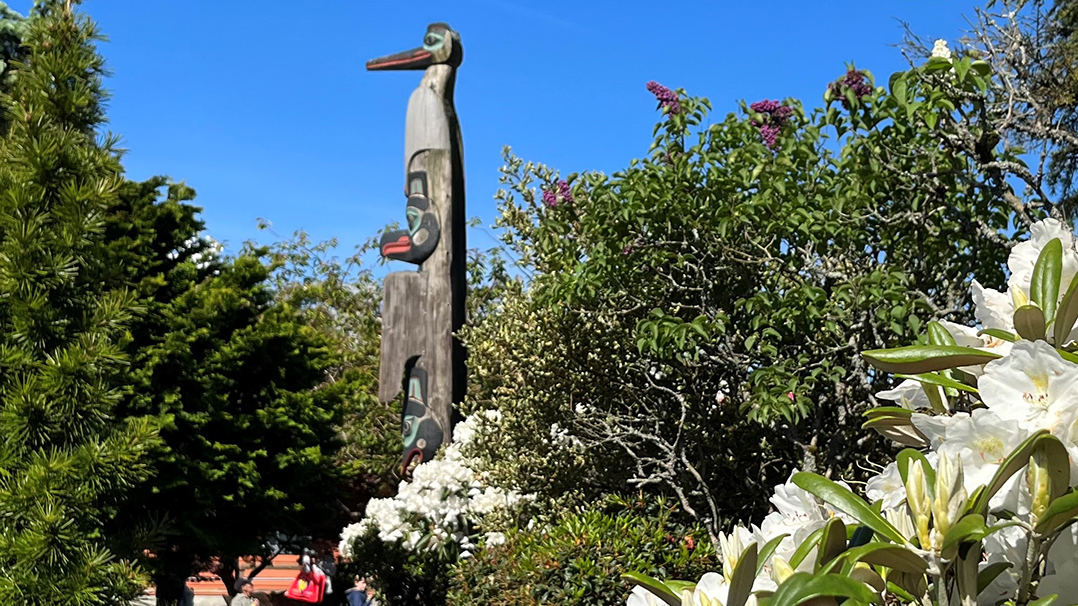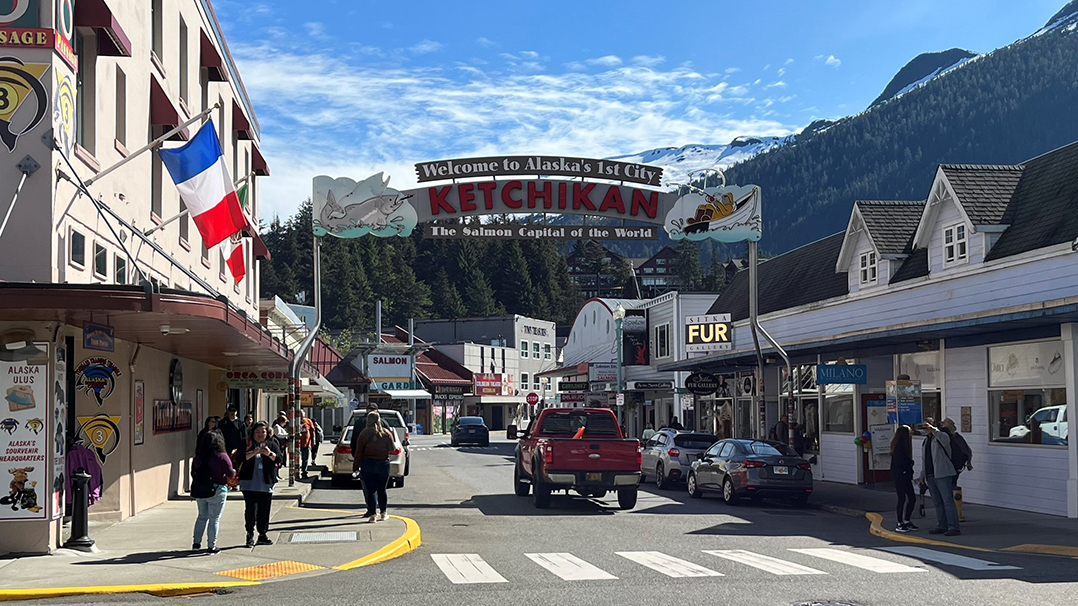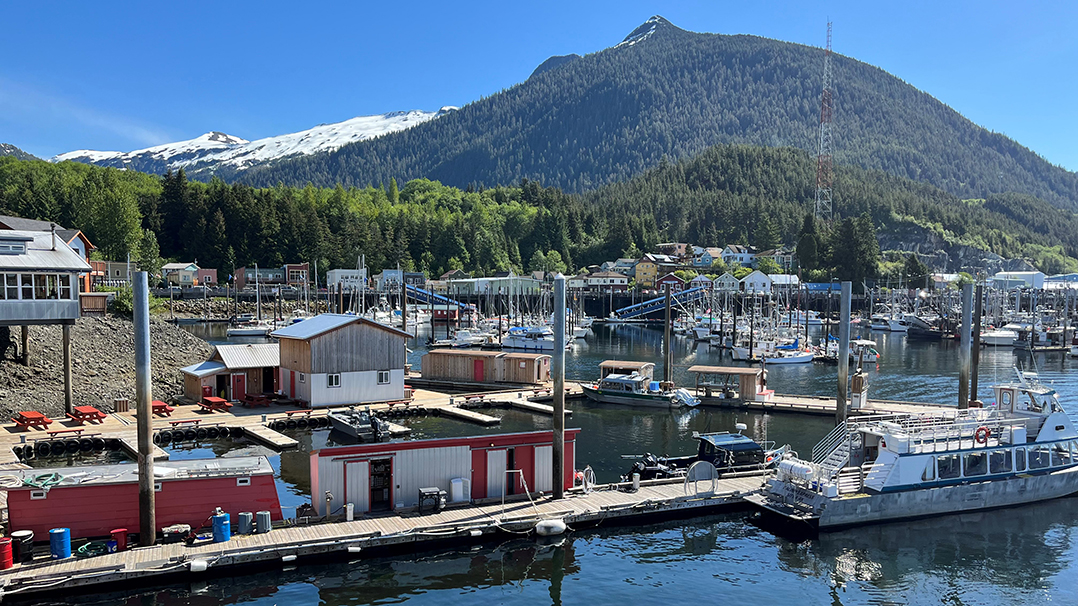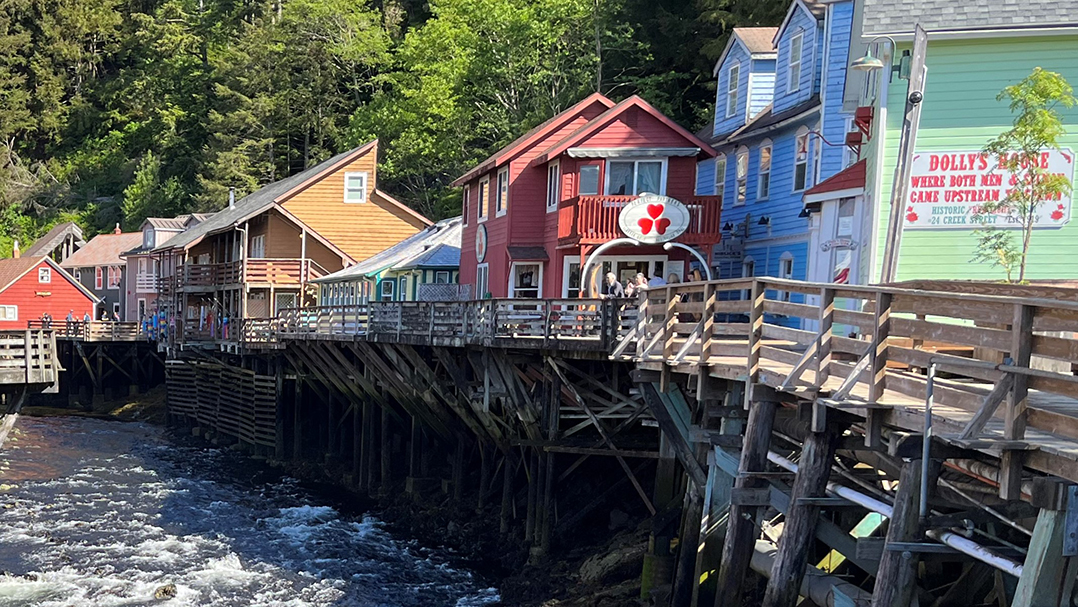Today, in our continuing tour of Alaska, we make the first of two visits to Ketchikan.
Ketchikan is on Revillagigedo Island at the southern end of Alaska’s portion of the famous Inside Passage, a waterway that snakes around the islands and fjords in Alaska’s Panhandle and along the coast of British Columbia.
Before Europeans came onto the island, the indigenous Tlingit people used it for a fish camp. In 1885, an Oregon canning company sent Mike Martin to Revillagigedo Island to establish a salmon cannery, which soon supported a town. Ketchikan, named after the Tlingit name for a creek running through town, was incorporated in 1900. In 1903, the town enacted an ordinance banning brothels from the downtown area, west of Ketchikan Creek. Until they were shut down in in 1954, a number of brothels operated along Creek Street, a boardwalk perched above the east side of Ketchikan Creek in what was then disparagingly called “Indian Town.”
Today, Ketchikan is a picturesque city, with a population of about 8,000. Each summer, cruise ships make about 500 stops in Ketchikan’s harbor, bringing in about 1 million visitors. Ketchikan bills itself as “Alaska’s First City” and the “Salmon Capital of the World.” Because of its rainfall, Ketchikan is also sometimes called the “Rain Capital of Alaska.” Ketchikan and the surrounding area include the largest collection of standing totem poles in the world. Until recently, the Chief Kyan pole in Whale Park near the center of town was featured on Page 25 of U.S. passports. The historic buildings along Creek Street have been restored. The Star, named for the star in the center of its maple dance floor, was once the largest brothel in town and is now listed on the National Register of Historic Places. Dolly’s House, another former brothel on Creek Street, is now a museum.







